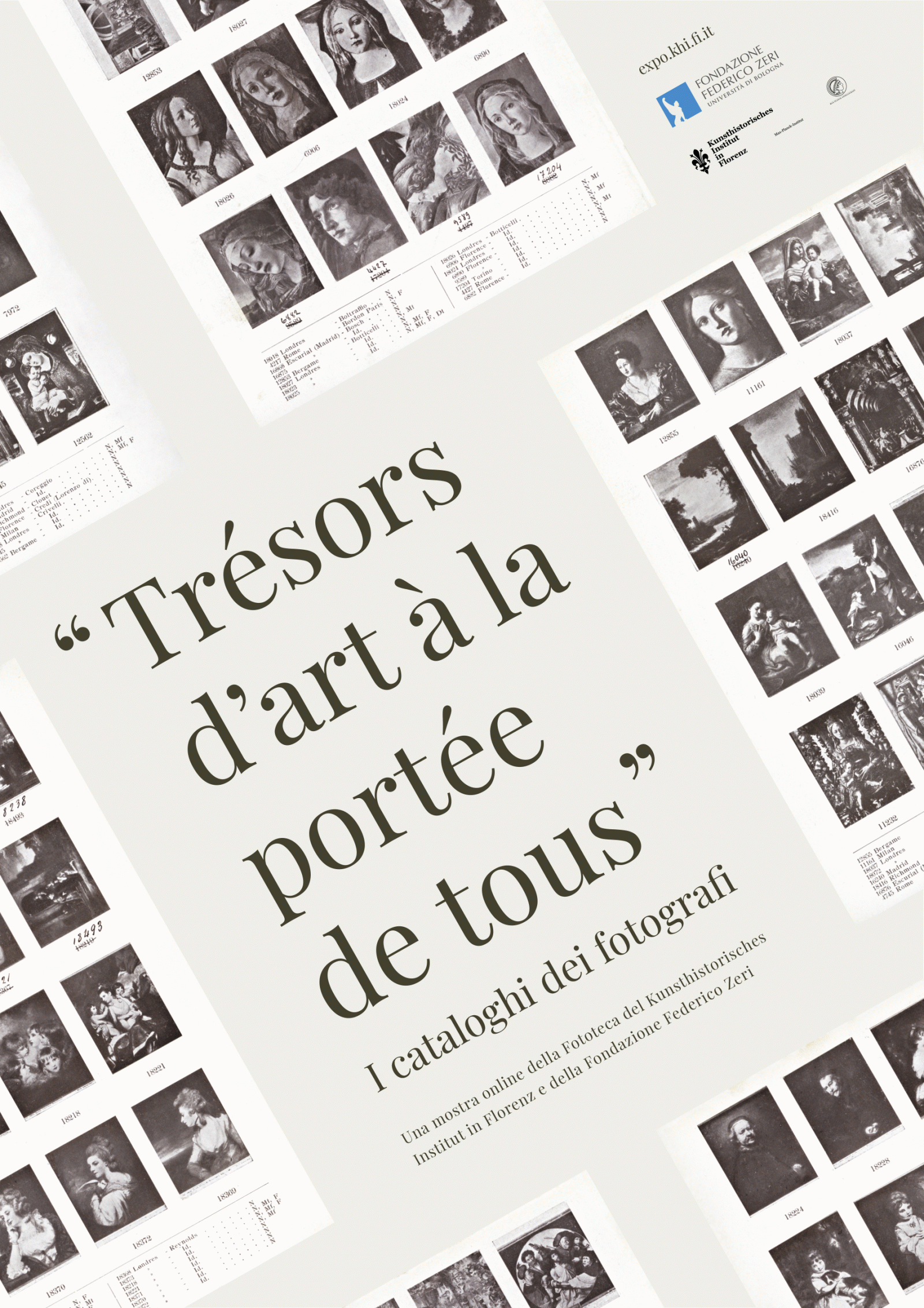Online Exhibition
"Trésors d'art à la portée de tous" – Photographers' catalogues
An online exhibition by the Photothek of the Kunsthistorisches Institut in Florenz and the Fondazione Federico Zeri

Printed catalogues are "inventories" in which photographers offer the lists of images commercially available in their own studios. Scholars have recently reassessed these materials that had been considered mere listings for many years, and now view them as essential sources for studying professionals, photographic ateliers as well as the photographs themselves since they contain important information concerning techniques, circulation, datings and attributions.
"Inventaire graphique de trésors d'art à la portée de tous": part of this line from the 1887 Braun catalogue has been used in the title of this online exhibition. It offers some keys to reading and interpreting the materials presented here: booklets that come mostly from the extraordinary collection of more than four hundred catalogues, along with photographs all in the Photothek of the Kunsthistorisches Institut in Florenze as well as from the Federico Zeri Foundation. Photographers' catalogues have made an invaluable contribution to the creation of lists of monuments and works of art (inventaire) and hence to the systematization of the artistic heritage (trésors d'art), in both the national or the apparently transnational sense of art-historical canons. Photographic reproductions of art were commercially successful thanks to their relatively low costs (à la portée de tous), and were accessible to art historians as well as to the middleclass audience that developed during the course of the nineteenth century.
This online exhibition ties in with the 2018 conference on photographic catalogues organized by the Federico Zeri Foundation (A heritage to order: Photographers' printed catalogues, Bologna, 29-30 May 2018) and it delves into the close connections between the books and the methods of acquiring and archiving photographs as well as the marks that the use of these inventories have left in the debate between scholars and art-historical research.


